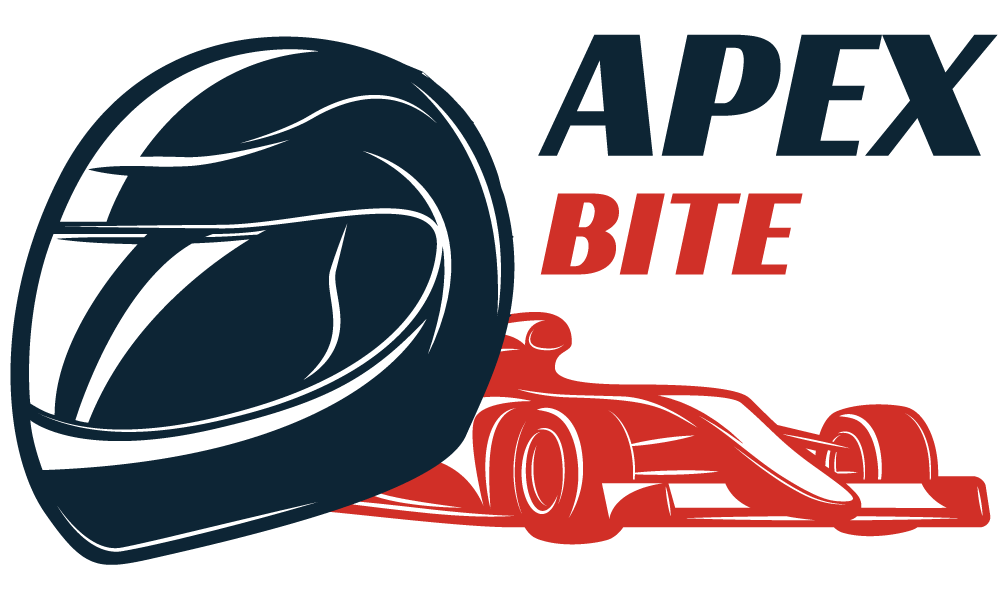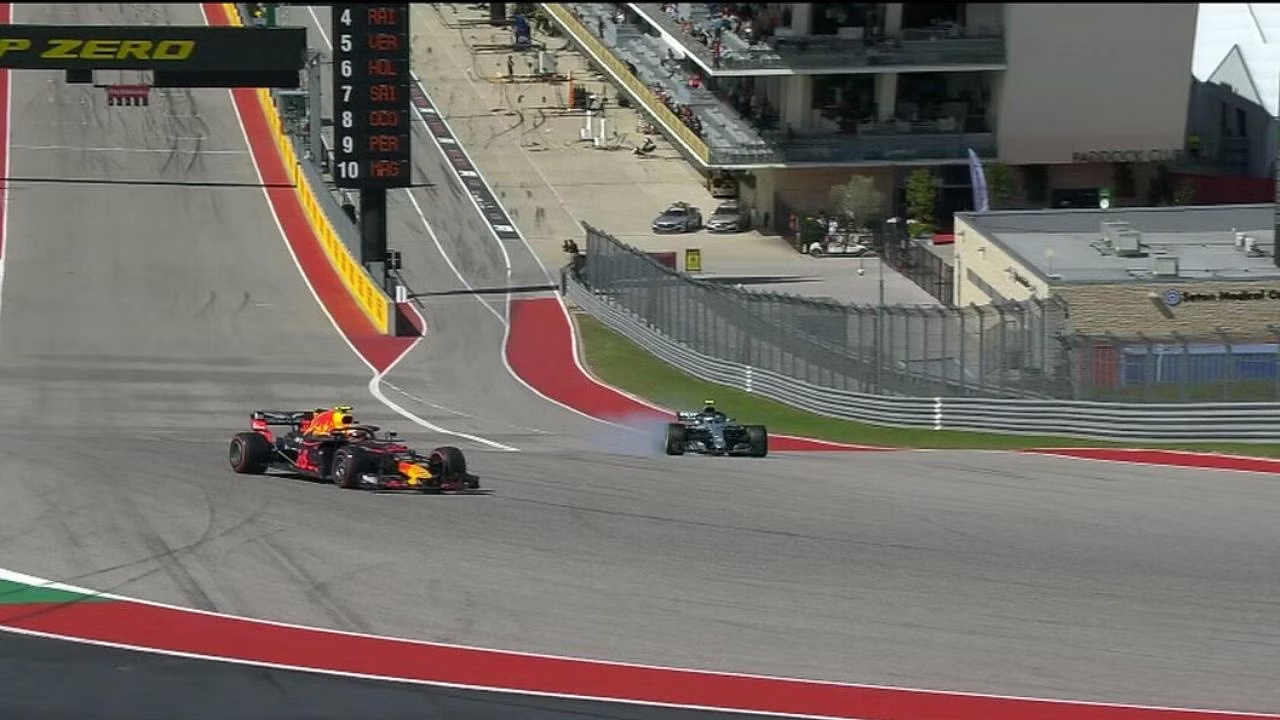In Formula 1 racing, the strategic deployment of pit stops is crucial for gaining an edge over the competition. Two primary strategies that teams employ are the undercut and overcut. The goal with either strategy is to overtake competitors by timing pit stops to maximize the advantage given by fresher tires or to capitalize on tire wear of other racers.
The undercut entails a driver pitting before the competitors they are racing against, with the intention of gaining a positional advantage when others make their stops later on. This strategy banks on the premise that fresh tires will allow for faster lap times, and by the time the rest of the field pits, the driver will have made up enough ground to emerge ahead. Conversely, an overcut is when a driver stays out longer than their rivals before pitting, aiming to utilize their tire’s peak performance for as long as possible and leapfrog other drivers as they lose time with worn tires.
Key Takeaways
- Pit stop strategies like the undercut and overcut are pivotal to overtaking in F1.
- An undercut can gain positions by leveraging fresher tires for faster laps early on.
- An overcut relies on extending the use of old tires to gain time before pitting.
Understanding F1 Strategies
In Formula 1 racing, strategic decisions are crucial for success, with pitstops and tyre compound choices being pivotal. The timing of a pitstop and the selection of tyre compounds can significantly affect a driver’s pace and track position.
The Role of Pitstops
Pitstops are a strategic tool within Formula 1. Teams must decide the optimal moment for a driver to enter the pits and change tyres. An undercut strategy involves pitting earlier than a competitor, with the aim of using fresh tyres to gain time and overtake when the competitor later pits. Conversely, an overcut is when a driver stays out on track longer, leveraging the potential of their current tyres to hopefully emerge ahead after rivals have pitted.
- Undercut:
- Pit before a rival.
- Gain time with fresh tyres.
- Overcut:
- Stay out longer than a rival.
- Capitalise on competitors’ slowing pace due to tyre degradation.
Tyre Compounds Influences
The choice of tyre compound plays a key role in a team’s strategy. Different compounds offer varying levels of grip and wear rate, impacting track performance and pitstop timing.
- Soft Compound: Offers more grip but wears faster.
- Hard Compound: Lasts longer but provides less initial grip.
A team may choose a softer compound to attempt a swift undercut or opt for a harder tyre to push an overcut strategy, potentially enabling the driver to maintain a consistent pace for an extended stint.
The interplay between strategy, track conditions, driver pace, and formula 1 car capabilities ensures that teams are constantly analysing data to determine their best approach for each race.
Undercut Explained
The undercut is a strategic move in Formula 1, where a driver pits before competitors to gain an advantage. Precise timing and swift execution can lead to overtaking on the track and a significant reduction in lap times.
Timing the Undercut
For an undercut to be effective, the team must time the driver’s pit stop precisely when their pace suggests they can benefit from fresher tires before their rivals. Ideally, this occurs when the driver behind has a faster overall pace but is unable to overtake due to track position. By pitting and returning to the track quickly, he can use the advantage of new tires to set faster lap times before his rival responds with a pit stop of their own.
Advantages of the Undercut
The primary advantage of an undercut is overtaking. When executed correctly, the driver can rejoin the race ahead of a competitor who has not yet pitted. Additionally, the driver benefits from enhanced grip and performance from new tires, ideally leading to faster lap times and the opportunity to pull away from the rival.
Risks Associated with the Undercut
However, the undercut is not without risk. If a driver pits too early, they may find their tires degrade prematurely, leading to a loss in pace towards the end of the stint. Conversely, pitting too late may result in insufficient time to capitalize on the advantage of fresh tires. There is also the inherent risk of traffic; rejoining the race in a busy midfield can negate the benefits of the undercut strategy.
Overcut Mechanics
Within the framework of F1 race strategy, overcut mechanics involve maintaining track position to capitalize on later pit stops. The approach leverages the performance of worn tires to extend a stint and potentially benefit from cleaner air and faster lap times.
Executing an Overcut
The overcut strategy is hinged on a driver staying out on track longer than the competitors before making a pit stop. They must extract the maximum performance from their current set of tires, consistently delivering fast lap times even as the tires degrade. Crucially, the timing of the overcut assumes that the driver will have enough tire life to maintain speed without losing significant time, possibly gaining track position as others pit and re-emerge into traffic.
Overcut Benefits
The primary benefit of an overcut is exploiting a phase of the race where a driver finds themselves in clean air, free from turbulence caused by other cars. This can often translate into faster lap times and reduced tire wear. When competitors ahead pit earlier, they may lose time battling traffic upon re-entry, while the driver executing the overcut continues at an unimpeded pace. Additionally, an overcut can offer strategic flexibility, giving the team more information on tire degradation and opponent strategies.
Possible Drawbacks of Overcut Strategy
However, the overcut is not without its risks. A driver might stay out too long on old tires, leading to a drop in lap times and a potential loss of track position if the advantage anticipated from clean air and delayed pitting doesn’t materialize. Furthermore, there’s a risk of a Safety Car or Virtual Safety Car period, which can disrupt the strategy and swing the advantage towards those who have pitted earlier. Thus, the overcut strategy requires precise calculation and an adaptable approach from the team and driver.
Pitstop Dynamics and Track Position
In Formula 1, the timing and execution of pitstops are critical for influencing track position. A team’s strategic choice between an undercut or overcut can significantly alter the outcome of a race.
Importance of Pit Lane Performance
Pit lane performance refers to the speed and efficiency with which a team’s pit crew can execute a pitstop. A swift pitstop can be the difference between gaining positions or losing them. Teams meticulously practice pitstop procedures to shave off precious milliseconds.
- Pitstop Time: The total time from pit entry to pit exit.
- Crew Coordination: Precision and timing of the pit crew during a tire change.
Implications for Track Position
Track position is influenced directly by the strategy employed during the pit windows. An undercut strategy involves pitting before the competition and utilising fresh tires to gain time on opponents who have yet to stop. In an overcut, a driver stays out longer on older tires, betting that the competitors’ fresh tires won’t negate the time gained by running on a clear track.
- Undercut Strategy:
- Pros: Gain position by fast laps on fresh tires.
- Cons: Risk of traffic post-pitstop can nullify the advantage.
- Overcut Strategy:
- Pros: Potential to extend the lead by leveraging the clear track.
- Cons: Performance might drop off due to tire wear, countering gains.
Racing Conditions and Strategy Adaptation
In Formula 1, racing conditions such as weather and track layout heavily influence strategic decisions like the undercut and overcut. Teams must constantly evaluate these dynamic factors to secure a tactical advantage over competitors.
Impact of Weather on Strategy
Track Conditions and Temperature: The weather’s impact on track temperature can alter tire performance significantly. On a hot track, tires wear faster, potentially favoring an undercut as drivers seek fresh rubber to maintain pace. Conversely, cooler temperatures can reduce tire wear, allowing teams to consider an overcut, letting drivers stay out longer to exploit the performance of older tires before pitting.
Safety Car and Virtual Safety Car: The deployment of a safety car or virtual safety car can drastically alter team strategies. During these periods, the pit lane may be a less costly option in terms of time lost on track, altering the usual calculations for undercuts and overcuts. Teams need to decide rapidly whether to pit their drivers, as bunching up the field under a safety car can offer a strategic edge.
Tailoring Strategy to Track Layout
Track Layout: Each F1 track has unique characteristics that teams must account for. Tracks with long straights and multiple DRS zones tend to favor the undercut strategy, as the benefit of fresh tires is amplified by the higher speeds and opportunities to overtake. In contrast, a track with complex corners or heavy braking zones can benefit an overcut, where a driver on older tires may defend their position more easily against opponents.
Adapting the strategy to suit the track layout is crucial for outmaneuvering competitors, whether it’s through the tight corners of Monaco or the long straights of Monza. Each circuit requires a nuanced approach, considering the optimal points for overtaking and the potential speed gains from newer tires.
Tyre Wear and Performance
The interplay between tyre wear and performance is a pivotal factor in Formula 1, affecting race strategy and outcomes. Teams must account for the degradation of tyres and its impact on speed and handling as they devise pit stop strategies.
Tyre Life Cycle
Tyres go through a complex life cycle during a race, beginning with optimal grip and gradually progressing towards wear. The compound of the tyre, whether it is a soft or hard compound, greatly influences this cycle. Soft compound tyres typically offer superior grip and hence, better performance but deteriorate quicker compared to hard compound tyres which may last longer but offer less initial grip.
- New Tyre: Maximum grip, performance peak.
- Worn Tyre: Reduced grip, performance drops off.
Understanding this cycle allows teams to predict performance changes and plan strategic pit stops.
Strategy around Tyre Durability
Strategies such as the undercut and overcut revolve around the durability of tyres. The undercut involves pitting before an opponent to gain an advantage with fresher tyres, while the overcut is pitting after the opponent, hoping they will be slowed down by worn tyres.
- Undercut: Pit before opponent, gain with fresh tyres.
- Overcut: Pit after opponent, capitalize on their tyre wear.
Teams must continuously monitor tyre wear throughout the race and adjust their strategies accordingly, balancing the trade-off between the lifespan of the tyre and the performance it can deliver.
Teams and Drivers Insight
Within Formula 1, both team strategy and driver execution are critical elements that can significantly alter the outcome of a race. Undercutting and overcutting are pivotal decisions made by teams like Red Bull, Mercedes, and Ferrari, and require skillful execution by drivers including Hamilton, Verstappen, and Leclerc.
Strategic Choices by Top Teams
Top F1 teams such as Red Bull, Mercedes, and Ferrari meticulously analyze timing and track conditions to decide between opting for an undercut or overcut strategy during races. An undercut is employed when a team pulls the driver in for a pit stop earlier than the competitors, with the aim that the fresh tyres will provide a speed advantage. Conversely, an overcut involves staying out longer on track before pitting, hoping rivals’ performance will drop off, allowing the driver to gain time and rejoin ahead.
- Red Bull might favor an aggressive undercut when Verstappen reports tire degradation, willing to take early action to leapfrog competitors.
- Mercedes could deploy a calculated overcut with Hamilton, using his tire management skills to extend a stint and create a strategic advantage.
- Ferrari needs to weigh team orders, pit crew efficiency, and Leclerc’s input from the cockpit to determine the timing of their strategic calls.
Driver’s Role in Strategy Success
The drivers, with their on-track skill and real-time feedback, are key to the success of both undercut and overcut strategies. Driver’s skill in tire management and pace can either make or break the strategy chosen by the team.
- Hamilton’s experience allows him to extract the maximum from aging tires, thereby enhancing the potential benefits of a later pit stop with an overcut.
- Verstappen’s aggressive driving style might favor fresh rubber, making undercuts a natural choice if he can maximize the out-lap performance gain.
- Leclerc’s ability to communicate tyre performance effectively informs Ferrari’s strategic decision, adapting to the unpredictable dynamics of a race.
While team decisions set the stage, it is the driver’s interpretation of the car’s behavior and their skillful driving that ultimately determine the effectiveness of the strategic maneuvers chosen on the track.
Historical and Seminal Races
In Formula 1, strategic decisions like the undercut and the overcut have led to historic race outcomes at Grand Prix around the globe. These maneuvers have repeatedly demonstrated their impact on the results at hustle of city circuits like Monaco and Singapore as well as the high-speed tracks like those in Italy and the United States.
Case Studies on Undercut and Overcut
- Monaco Grand Prix: The streets of Monaco are notoriously difficult for overtaking, often turning the race into a strategic chess match. Historically, an undercut strategy is frequently adopted by teams looking to gain position on this tight circuit. For instance, in the 2019 Monaco Grand Prix, Lewis Hamilton managed to maintain his lead by tightly executing an undercut, showing just how crucial timing can be.
- Italian Grand Prix: Monza, known for its high speeds, presents a contrasting scenario. Here, overcut strategies can often be witnessed; teams might leave drivers out on older tyres to benefit from clear air and build enough gap that, even after pitting, positions can be retained or improved. The 2017 Italian Grand Prix saw Daniel Ricciardo leapfrog several cars using an impressively timed overcut.
- Singapore Grand Prix: Singapore’s mix of long straights and tight corners puts strategy at the forefront. The 2018 race highlighted the significance of tyre management where Lewis Hamilton executed a successful undercut to extend his lead, proving the effectiveness of pitting early for fresh tyres in a street circuit not too dissimilar to Monaco.
- United States Grand Prix: The Circuit of the Americas has offered a range of strategic battles over the years. The variation in its layout means that either an undercut or an overcut could work, depending on the circumstances of the race. For example, Max Verstappen in the 2018 United States Grand Prix performed a successful undercut to clinch a higher podium finish.
These case studies are a testament to the nuanced application of strategy in F1, revealing just how determinative strategic calls can be in the volatile dance of Grand Prix racing.
Frequently Asked Questions
In the high stakes world of Formula 1 racing, strategic use of pit stops plays a crucial role in determining the race outcome. Key maneuvers in this domain are the undercut and overcut strategies, each capitalizing on different race conditions to gain an advantage over competitors.
What are the strategic advantages of an undercut in Formula 1 racing?
The undercut involves pitting before the competitor one is trailing, then utilizing the performance benefits of fresh tires to gain time on them. This often results in the driver ahead returning to the track behind the one who pitted first, effectively completing an overtake in the pit lane.
How does an overcut provide a competitive edge in an F1 race?
An overcut is the opposite, where a driver continues to race on older tires while a competitor pits, aiming to put in faster laps in clear air and leapfrog the competitor once they complete their own pit stop. This is effective when tires degrade slower than expected or when clean air allows for significant lap time improvement.
What factors determine the choice between an undercut and an overcut during a Grand Prix?
Teams may choose between undercut and overcut strategies based on tire wear rates, the driver’s ability to manage tires, traffic conditions on the track, and the potential to gain time in clean air. They must also consider their competitors’ strategies and pit window opportunities.
How do pit stop timings influence the success of an undercut or overcut in F1?
Pit stop timing is essential; an undercut can fail if the tires don’t provide the expected gain in performance, or if the freshly-pitted driver is held up by traffic. Conversely, an overcut can fail if the driver in clean air does not capitalize on the opportunity to set faster laps.
In what scenarios is an overcut preferable to an undercut in Formula 1 strategy?
An overcut may be preferable when the lead car’s tires are not significantly worn, when overtaking on track is difficult, or when the following driver is faster and can take advantage of clear air to pull ahead. It also holds merit later in the race when competitors’ pacing on worn tires becomes clearer.
Can the track layout or tire compounds affect the decision to execute an undercut or overcut?
Yes, the track layout, particularly its effect on tire wear, and the specific tire compounds available during a race, can heavily impact a team’s decision to deploy either strategy. A track harsh on tires can favor an undercut, while one with less degradation may encourage an overcut.





